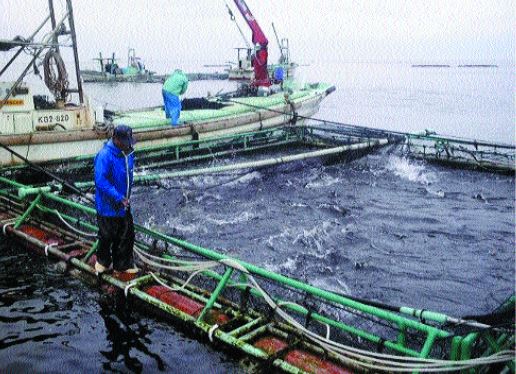Harvesting systems
The minimum market size for Japanese amberjack starts at approximately 300 g; fish of this size can be harvested (Figure 122) from August, after a growth of about 4 months. The optimum size is about 1.2 kg, normally harvested from October to December.
Seines and dragnets are used for harvesting from ponds and enclosures, but harvesting from cages is undertaken with dip nets and similar simple devices (Pillay 1995). Fish are fasted before harvesting, thus allowing ingested feeds to be evacuated. This reduces oxygen consumption and lessens the water pollution caused by evacuation during transport. The result of pre-harvest fasting is an improvement in the quality of the fish. In order to maintain the freshness of the product as long as possible, the fish should be killed immediately after being taken from the water by severing the medulla oblongata. They should be bled by cutting the caudal artery with a knife.
If it is impossible to treat the fish individually they should be dumped into a tank with a large amount of chipped/slush ice. If the moribund state is prolonged or the fish are shipped without enough chilling, rigor mortis will start earlier and reduce product quality (Nakada 2000).

Figure 122. Yellowtail harvesting (Photo: M. Nakada)
There is a great demand for live fish, which fetch a higher price. Those who farm fish have an advantage over those involved in capture fisheries because most of the fish can be caught and transported alive. Fish are usually taken to markets by boat or trucks, stored in canvas tanks. There are very few detailed records of the economics of yellowtail culture; like other kinds of farming, costs and earnings are strongly dependent on local conditions, the technology employed and farmers’ skill and experience (Pillay 1995).